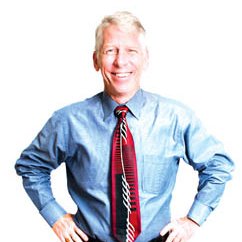
When I imagine large energy projects, I usually associate them with controversy and trade-offs. So imagine my surprise when I heard that the utility companies, the local water district, the economic-development folks, local farmers and the Sierra Club had all endorsed a proposal of a gigantic solar park in the San Joaquin Valley, south of Fresno. I can’t think of any recent project with such a diverse group of supporters. I knew climate change was impacting weather systems, but I did not think it would impact the freezing level of hell.
The 30,000-acre Westlands Solar Park has such a large fan club, in part, because it represents a new approach to locating renewable-energy sources. Instead of putting these large facilities out in the desert, where they might harm an ecosystem, the new idea is to locate them on polluted or unusable land. We cannot destroy an ecosystem where the damage has already been done. The Westlands site has been farmed for many years, and salt has built up in the soil to levels that make it unsuitable for continued farming.
The second major reason the Westlands project makes sense is because major utility lines already exist nearby. Building new utility lines is very expensive, and it is difficult to get the hundreds of miles of required easements for new utility lines. And because a significant amount of power is lost in transmission, generating power close to home is more energy-efficient.
After hearing Westlands Solar Park principal Daniel Kim speak at a Bank of America event, I spoke with him over coffee about his project. Kim explained that the proposed solar park would lease the land from the Westlands Water District. In 2000, this water district, one of the country’s largest, bought 100,000 acres of salty land that was largely unsuitable for farming. They purchased this land for the water rights. Now, the Westlands Water District, facing drought and financial challenges, is looking for ways to better utilize this property.
Since the land is owned by a single governmental agency, it will be easier to get the solar-park project moving. It is a big plot of land, the size of San Francisco. Right now, Kim is working on phase one, which will have the potential to supply up to 1,000 megawatts of energy. One megawatt of energy could power a Walmart Supercenter. The existing transmission lines can easily handle this level of energy production. If fully developed, the project would be one of the world’s largest solar plants, supplying up to 2,700 megawatts of energy. This is almost half the energy required to run the city of Los Angeles.
This project makes sense in so many different ways. And it paves the way for large solar projects to lead California towards a more sustainable future. With or without hell freezing over.
